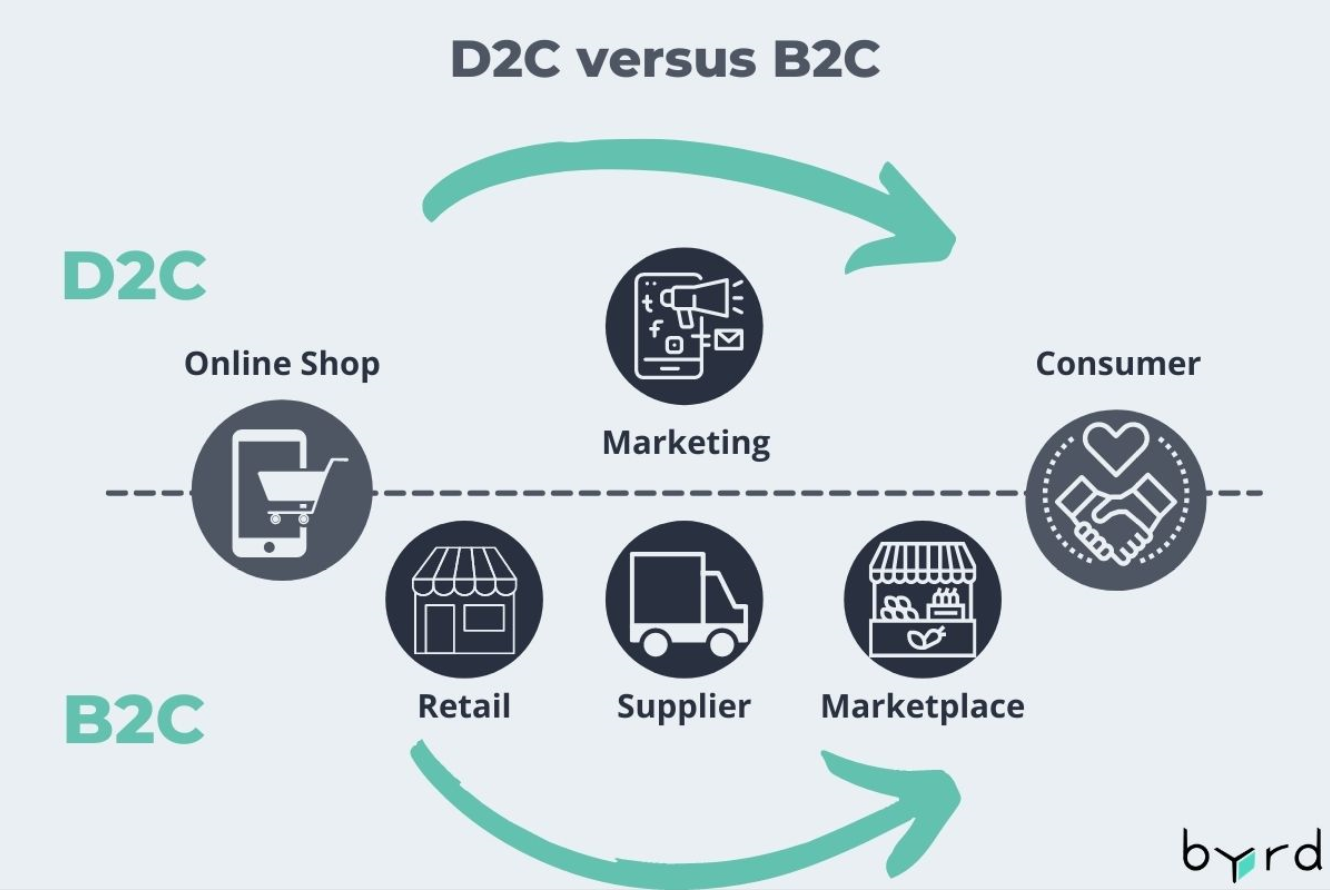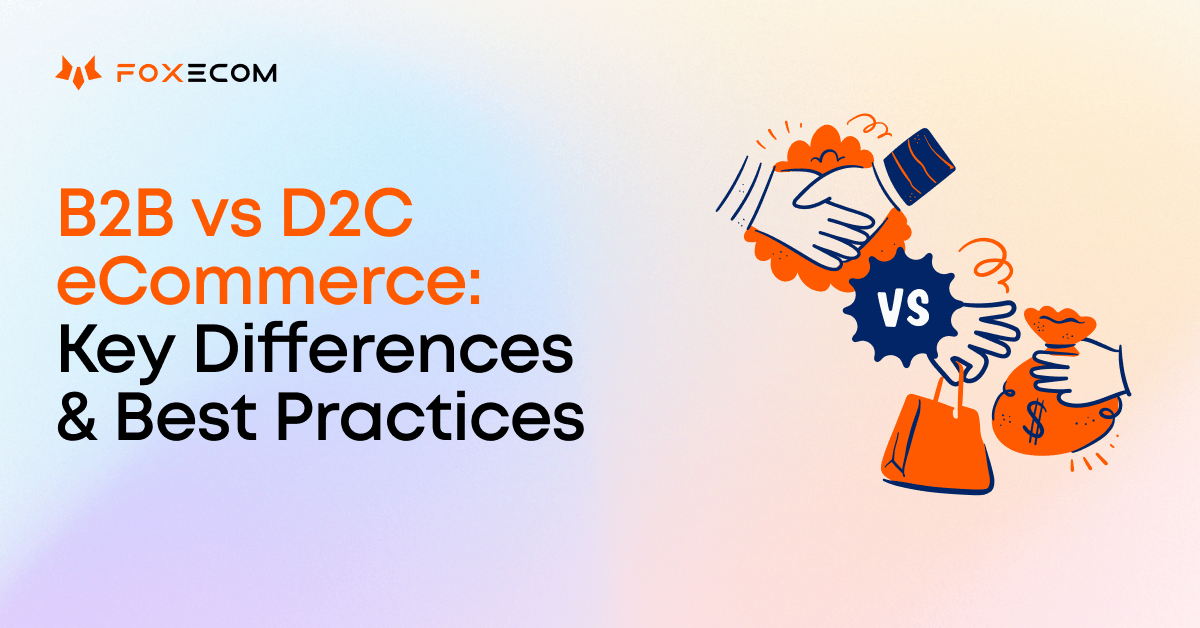Discovering the Possible of D2C Ecommerce: A Comprehensive Overview for Businesses
The D2C ecommerce design provides a considerable shift in just how brands involve with consumers. It allows companies to bypass typical retail channels, fostering deeper connections and possibly increased earnings margins. Nonetheless, this strategy is not without its intricacies. Recognizing the nuances of D2C ecommerce is essential for brands intending to thrive. What methods can they take on to browse this progressing landscape properly? The responses may redefine their service strategies.
Comprehending the D2C Ecommerce Version

Key Conveniences of D2C Ecommerce for Brands
The D2C ecommerce design offers brand names significant benefits, especially relating to increased revenue margins. By eliminating intermediaries, companies can keep a larger share of sales earnings. Furthermore, this direct connection with consumers cultivates boosted brand name commitment, encouraging repeat acquisitions and long-term involvement.
Increased Earnings Margins

Enhanced Brand Loyalty
Building on the economic advantages of D2C ecommerce, improved brand name loyalty emerges as another important advantage for business engaging directly with customers. By developing a straight connection, brand names can promote deeper partnerships with their consumers, gaining understandings right into actions and preferences. This direct interaction enables even more customized advertising strategies, which reverberate highly with customers. Additionally, brands have the possibility to regulate their messaging and client experience, reinforcing brand worths and developing count on. When clients feel a personal link, they are most likely to return, promote for the brand, and take part in area interaction. Inevitably, enhanced brand name commitment not only drives repeat acquisitions yet likewise grows an enthusiastic client base, additional strengthening a brand name's setting out there.
Obstacles Faced by D2C Brands
D2C brand names experience numerous substantial obstacles that can affect their success. Inventory administration concerns can lead to stock lacks or excess, complicating operations and customer satisfaction. Furthermore, marketing budget restraints commonly restrict the capability to effectively reach and involve target market.
Inventory Administration Issues
Efficient inventory administration offers an awesome difficulty for numerous brands operating in the direct-to-consumer (D2C) area. These brand names typically face rising and fall demand, which can cause overstock or stockouts, ultimately impacting consumer fulfillment and income. Furthermore, the lack of innovative inventory monitoring systems can lead to discrepancies in between actual stock levels and reported data, making complex order gratification. The diverse variety of products D2C brands generally use likewise makes complex stock management, as variants in dimensions, shades, and styles require even more precise oversight. Many D2C companies may struggle with limited warehousing abilities, leading to inefficient use of room and resources. Efficient supply management continues to be an important hurdle for D2C brand names aiming for sustainable development and operational performance.
Marketing Budget Plan Constraints
Maneuvering marketing spending plan restrictions is a significant obstacle for lots of direct-to-consumer (D2C) brand names. Limited funds typically restrict these companies' ability to purchase all-inclusive marketing approaches, causing reduced exposure in an affordable market. D2C brands regularly come to grips with the demand to take full advantage of roi (ROI) while targeting certain audiences efficiently. This difficulty is aggravated by increasing expenses in electronic marketing and the need to assign funds throughout multiple channels, including social media, internet search engine, and email advertising and marketing. As a result, many D2C brand names must innovate affordable marketing remedies, leveraging organic development strategies and influencer partnerships. Inevitably, successfully navigating these budget restraints is essential for maintaining development and achieving lasting profitability in the developing ecommerce landscape.
Techniques for Constructing an Effective D2C Ecommerce Organization
As customers increasingly look for straight connections with brands, establishing a successful D2C ecommerce service needs a critical technique that prioritizes customer interaction and trust fund. One efficient strategy is to create compelling brand stories that reverberate with target audiences, fostering psychological links. Utilizing social networks systems can boost presence and facilitate two-way communication, allowing brands to engage directly with customers.Moreover, personalized experiences via tailored advertising and marketing efforts can substantially improve client retention and commitment. Executing loyalty programs and offering special offers can further incentivize repeat purchases.Streamlining the buying procedure is vital, making sure an user-friendly interface that improves the purchasing experience. Furthermore, clear communication relating to delivery and returns develops count on and motivates consumer confidence.Finally, actively seeking client responses and responding to it shows a commitment to improvement and consumer contentment, critical components in the affordable D2C landscape.
Leveraging Technology for Boosted Consumer Experience
In today's competitive D2C ecommerce landscape, technology plays a crucial role in forming consumer experiences. Services progressively use sophisticated devices such as man-made intelligence, chatbots, and individualized algorithms to enhance interactions and enhance the buying process. By integrating these technologies, brand names can supply customized product suggestions based on individual choices and buying habits, cultivating a more interesting experience.Moreover, responsive site designs and mobile applications ensure that clients can access services effortlessly throughout various gadgets. Enhanced payment options, consisting of one-click check outs and digital budgets, further simplify deals, making it easier for customers to make purchases.Data analytics additionally allows businesses to collect insights into consumer habits, enabling continual improvement of services and offerings. In general, leveraging innovation not just enhances client contentment but also grows loyalty, inevitably driving long-term success in the D2C ecommerce field.
Advertising Methods to Drive D2C Sales
Exactly how can brand names properly record the attention of customers in a saturated market? To flourish in the direct-to-consumer (D2C) landscape, brands must employ targeted advertising strategies. Making use of social networks platforms, brand names can engage customers via interactive material, influencer partnerships, and user-generated posts. Personalized email campaigns can additionally promote a sense of link, supplying customized promotions based upon customer habits and preferences.Moreover, storytelling plays an essential function in differentiating a brand name's narrative, making it relatable and remarkable. Brand names ought to invest in seo (SEARCH ENGINE OPTIMIZATION) to enhance visibility, guaranteeing their items are conveniently visible online. In addition, leveraging data analytics permits businesses to fine-tune their marketing approaches and recognize consumer patterns much better. Eventually, a multi-channel method that incorporates creativity with data-driven insights can greatly improve D2C sales, permitting brands to attract attention in a jampacked market.
Future Fads in D2C Ecommerce
With the quick development more info of technology and consumer choices, the future of D2C ecommerce is positioned for substantial improvement. Arising trends show a shift in the direction of hyper-personalization, where brands utilize data analytics to tailor offerings to specific customer needs. This modification improves consumer experiences, fostering loyalty and engagement.Moreover, sustainability is ending up being an essential aspect, with consumers significantly preferring brand names that prioritize environment-friendly practices - D2C Ecommerce Agency. Business are anticipated to take on clear supply chains and lasting materials to fulfill this demand.The assimilation of expert system and enhanced truth will additionally change the shopping experience, enabling consumers to picture items in their atmospheres before purchase. Additionally, social commerce is prepared for to grow, as platforms like Instagram and TikTok assist in seamless shopping experiences directly within social media.These fads collectively represent a dynamic future for D2C ecommerce, stressing customer-centric strategies and innovative technologies that redefine customer communications
Regularly Asked Concerns
What Industries Advantage A Lot Of From D2C Ecommerce?
The current inquiry highlights markets that grow with direct-to-consumer (D2C) ecommerce. Extremely, style, appeal, electronic devices, and food sectors take advantage of D2C designs to boost brand name loyalty, boost customer connections, and maximize earnings margins successfully.
Just How Do Shipping Prices Influence D2C Prices Approaches?
Shipping prices greatly influence D2C prices strategies. Businesses need to stabilize these expenditures with affordable rates, thinking about client assumptions and profit margins. Efficient monitoring of shipping can improve client contentment and drive sales in direct-to-consumer models.
What Settlement Options Should D2C Businesses Offer?
D2C organizations ought to offer varied payment alternatives, including credit/debit cards, electronic wallets, and get now, pay later on services. This variety improves customer comfort, increases conversion prices, and caters to various consumer choices in the online buying landscape.
How Can D2C Brands Deal With Customer Returns Successfully?
D2C brands can handle customer returns efficiently by applying straightforward return plans, supplying pre paid shipping tags, and making certain timely reimbursements (D2C Ecommerce Agency). Clear communication and structured procedures improve client contentment and encourage repeat business
What Lawful Considerations Exist for D2C Ecommerce Procedures?
Legal factors to consider for D2C ecommerce operations consist of conformity with customer defense legislations, data personal privacy guidelines, copyright civil liberties, and taxes needs. Brand names have to browse these intricacies to prevent legal challenges and guarantee smooth operations. By getting rid of intermediaries, D2C brands can supply competitive prices and cultivate a much more intimate relationship with their customers.The D2C design is defined by its reliance on electronic platforms, enabling brand names to make use of social media, on-line markets, and their own sites to engage with consumers straight. D2C ecommerce facilitates the collection of important consumer data, making it possible for brands to customize their offerings and marketing strategies efficiently, ultimately driving sales and boosting margins. In addition, brand names have the possibility to regulate their messaging and customer experience, enhancing brand name worths and building depend on. As consumers progressively seek direct connections with brand names, developing an effective D2C ecommerce company needs a calculated technique that focuses on customer engagement and trust. D2C brands can manage client returns efficiently by executing easy to use return plans, using pre paid shipping tags, and making sure punctual refunds.